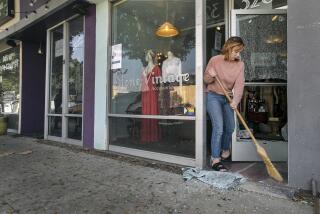State to Restore Cal/OSHA in Response to Prop. 97 Approval
In response to voter approval of Proposition 97, the Deukmejian Administration announced late Tuesday that it will reinstate Cal/OSHA, the state program to protect the safety and health of California’s 9.5 million private-sector workers.
Ronald T. Rinaldi, the state’s director of industrial relations, one of the prime opponents of Proposition 97, announced that $8.5 million will be spent in the current fiscal year, ending June 30, to restore Cal/OSHA.
He said the program will be restored to the level at which it was operating in January, 1987, when Gov. George Deukmejian announced that he would veto further funding for the program. The governor asserted that the program was replaceable by federal OSHA, with no loss of safety to workers.
The action created a controversy that led to lawsuits and eventually to the initiative campaign.
Key labor and legislative leaders responded favorably to Tuesday’s announcement. But Los Angeles County Dist. Atty. Ira Reiner, a chief spokesman for Proposition 97, said he believes that the level of funding proposed by Rinaldi is inadequate.
Voters in the Nov. 8 general election, by a margin of 53.7% to 46.3%, approved Proposition 97, a measure backed by organized labor, public health advocates, the Sierra Club and some business groups. Deukmejian wrote the ballot argument against the measure and campaigned for its defeat.
But Tuesday, Rinaldi said: “The Administration’s position on approved initiatives is consistent and clear. Once the voters have made a decision, we will move as efficiently as possible to implement their decisions.”
Rinaldi said that in addition to the $8.5 million, which is available from a state contingency fund, he has contacted the U.S. Department of Labor to request federal financing “as soon as possible to help cover the costs of reinstating Cal/OSHA.”
In an interview, Rinaldi said that unless there are objections from the Legislature, the funding process to restore the agency would formally begin in 30 days.
He said he anticipates that by July 1, Cal/OSHA will have a staff of 385 people, including industrial hygienists, safety engineers, and mining and tunneling experts. A large part of that schedule depends on how many former Cal/OSHA employees want to go back to the agency, Rinaldi said.
There will be 10 regional Cal/OSHA and eight satellite offices under current plans, Rinaldi said.
Previous Structure
Prior to the agency’s demise last year, there were four regional offices and 21 satellite offices, he said. Rinaldi said the new framework will lead to a more efficient operation.
Looking to the future, he said the proposed 1989-90 fiscal year budget, which will be introduced in January, will contain funding to support a $32-million worker safety program. Rinaldi said $14 million of that amount will come from federal matching funds.
Today the Assembly subcommittee on worker safety and health will hold a hearing in Sacramento on the progress of restoring Cal/OSHA. Jerry McFettridge, the committee’s chief consultant, said he expects few fireworks at the hearing, since his boss, Assemblyman Richard Floyd (D-Hawthorne), seems pleased by Tuesday’s developments. Along the same line, Assemblyman Tom Hayden (D-Santa Monica), chairman of the Assembly Labor Committee, issued a statement saying that the initial plan presented by the Department of Industrial Relations was favorable and promising.
John F. Henning, executive secretary of the California Labor Federation (AFL-CIO), also expressed his support.
“I’m pleased the governor is moving on this,” he said.
Reiner’s Viewpoint
The one discordant note was sounded by Reiner. Earlier this month after Proposition 97 passed, Reiner held a news conference saying that Cal/OSHA should be restored to its 1982-83 staffing levels, which he said were considerably higher than the levels when the agency closed last year.
“The voters voted for a maximum worker safety program, not a minimum program,” he said.
But other sources said it seems unlikely that there will be a major fight on the issue, at least in the short term.
“Ideally, there should be enough money to protect all the workers of the state, but that has never been the case,” Henning said. “In terms of restoration, we were fighting for restoring Cal/OSHA as it was in January, 1987, when the governor announced he was going to slash it,” Henning added. “But that doesn’t mean that once we get it established, we won’t make our own budgetary proposals” to enlarge the program.
More to Read
Sign up for Essential California
The most important California stories and recommendations in your inbox every morning.
You may occasionally receive promotional content from the Los Angeles Times.










